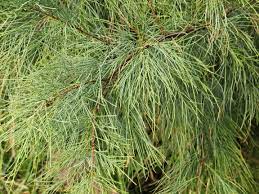Casuarina equisetifolia L.
Casuarina equisetifolia is a monoecious tree that typically grows to a height of 6–12 m (20–39 ft), sometimes to 35 m (115 ft), and has bark that is smooth and greyish on young specimens, scaly or furrowed on older trees. The branchlets are drooping, up to 300 mm (12 in) long, the leaves reduced to scale-like teeth about 0.7 mm (0.028 in) long, arranged in whorls of 7 or 8 around the branchlets. The sections of branchlet between the leaf whorls (the "articles") are 5–13 mm (0.20–0.51 in) long and 0.5–1.0 mm (0.020–0.039 in) wide. Male flowers are arranged in spikes 7–40 mm (0.28–1.57 in) long in whorls of 7 to 11.5 per centimetre (per 0.39 in.) the anthers 0.6–0.8 mm (0.024–0.031 in) long. The female cones are on a peduncle 3–13 mm (0.12–0.51 in) long and sparsely covered with soft or woolly hairs. Mature cones are 10–24 mm (0.39–0.94 in) long and 9–13 mm (0.35–0.51 in) in diameter, the samaras 6–8 mm (0.24–0.31 in) long.
- Family: Casuarinaceae
- Habit: flowering plant
- Habitat: native to Australia, New Guinea, Southeast Asia and India.
- Status : Common
Vernacular names
Malayalam-Kattadi
-sampirani
English- coastal she-oak
- horsetail she-oak
-ironwood
- beach sheoak
Medicinal Uses
The bark is used to treat dysentery and diarrhoea.
